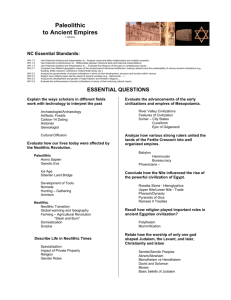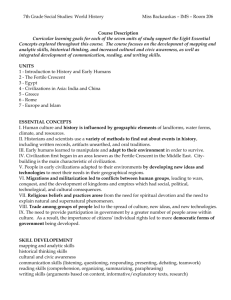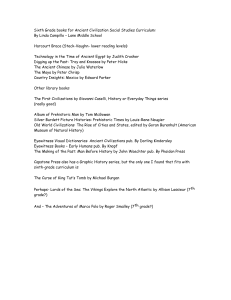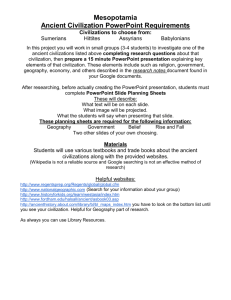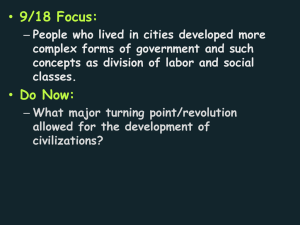liliiii
advertisement
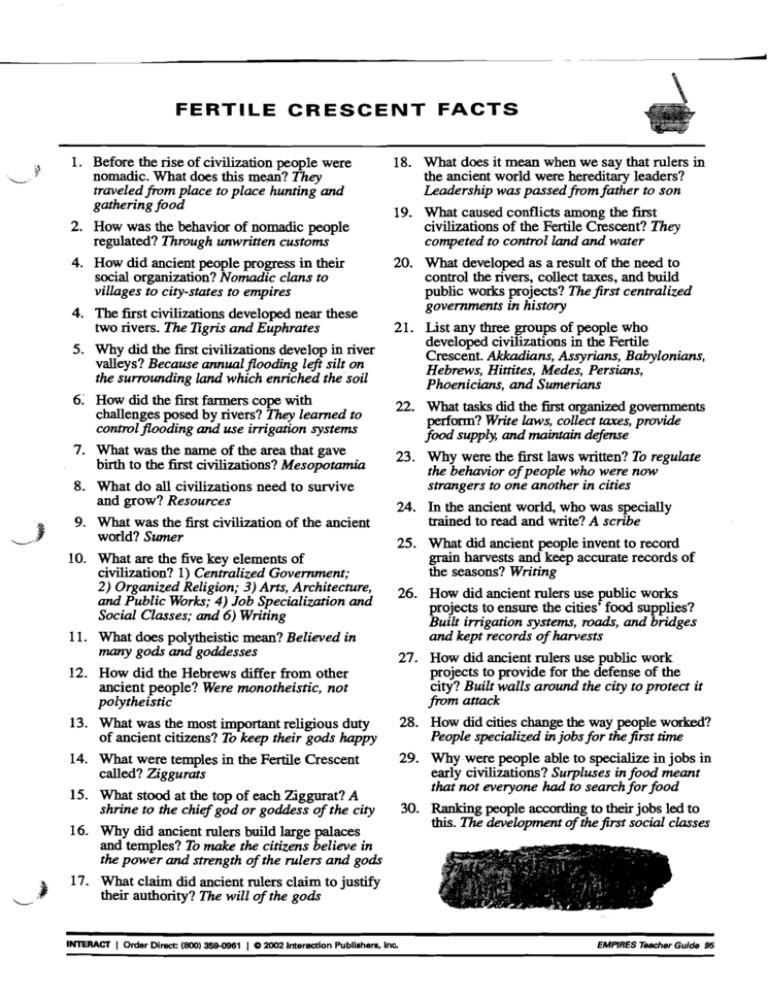
liliiii FERTILE CRESCENT FACTS '-..-,- 1. Before the rise of civilization people were nomadic. What does this mean? They traveled from place to place hunting and gathering food \' 2. How was the behavior of nomadic people regulated? Through unwritten customs 4. How did ancient people progress in their social organization? Nomadic clans to villages to city-states to empires 4. The first civilizations developed near these two rivers. The Tigris and Euphrates 19. What caused conflicts among the first civilizations of the Fertile Crescent? They competed to control land and water 20. What developed as a result of the need to control the rivers, collect taxes, and build public works projects? The first centralized govemments in history 5. Why did the first civilizations develop in river valleys? Because annual flooding left silt on the surrounding land which enriched the soil 21. List any three groups of people who developed civilizations in the Fertile Crescent. Akkadians, Assyrians, Babylonians, Hebrews, Hittites, Medes, Persians, Phoenicians, and Sumerians 6: How did the first farmers cope with challenges posed by rivers? They leamed to control flooding and use irrigation systems 22. What tasks did the first organized governments perform? Write laws, collect taxes, provide food supply, and maintain defense 7. What was the name of the area that gave birth to the first civilizations? Mesopotamia 23. Why were the first laws written? To regulate the behavior ofpeople who were now strangers to one another in cities 8. What do all civilizations need to survive and grow? Resources 9. What was the first civilization of the ancient world? Sumer ---.-.", 18. What does it mean when we say that rulers in the ancient world were hereditary leaders? Leadership was passed from father to son 10. What are the five key elements of civilization? 1) Centralized Govemment; 2) Organized Religion; 3) Arts, Architecture, and Public Works; 4) Job Specialization and Social Classes; and 6) Writing 11. What does polytheistic mean? Believed in many gods and goddesses 24. In the ancient world, who was specially trained to read and write? A scribe 25. What did ancient people invent to record grain harvests and keep accurate records of the seasons? Writing 26. How did ancient rulers use public works projects to ensure the cities' food supplies? Built irrigation systems, roads, and bridges and kept records of harvests 12. How did the Hebrews differ from other ancient people? Were monotheistic, not polytheistic 27. How did ancient rulers use public work projects to provide for the defense of the city? Built walls around the city to protect it from attack 13. What was the most important religious duty of ancient citizens? To keep their gods happy 28. How did cities change the way people worked? People specialized in jobs for the first time 14. What were temples in the Fertile Crescent called? Ziggurats 29. Why ,were people able to specialize in jobs in early civilizations? Surpluses in food meant that not everyone had to search for food 15. What stood at the top of each Ziggurat? A shrine to the chief god or goddess of the city 16. Why did ancient rulers build large palaces and temples? To make the citizens believe in the power and strength ofthe rulers and gods '-.-­ ,it 30. Ranking people according to their jobs led to this. The development of the first social classes 17. What claim did ancient rulers claim to justify their authority? The will of the gods • INTERACT I Order Direct: (BOO) 359-0961 I C 2002 Interaction Publishers. Inc. EMPIRES TBBCher Guide 95


